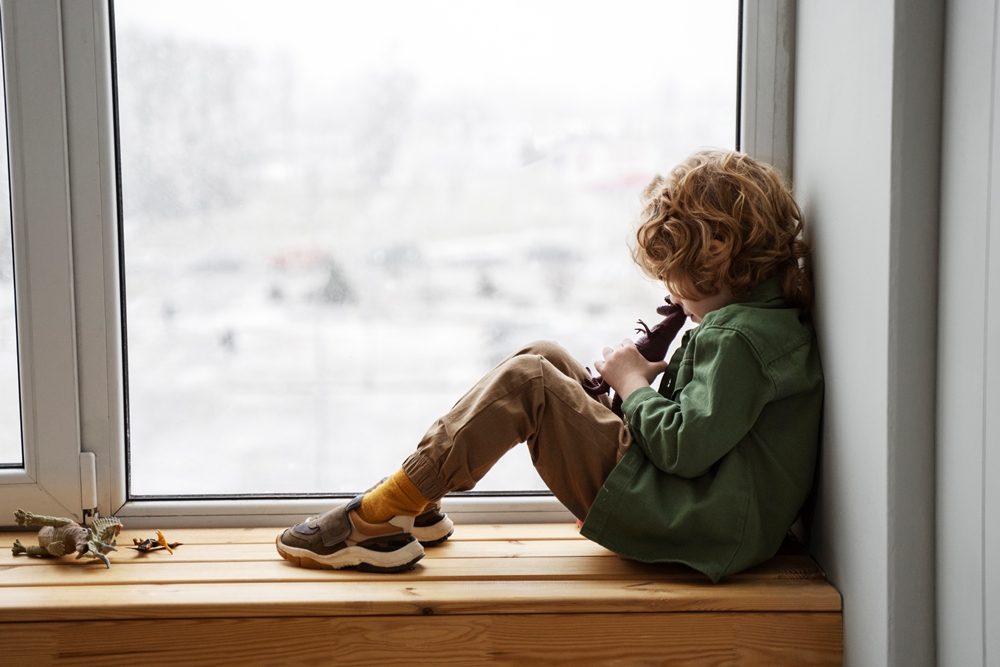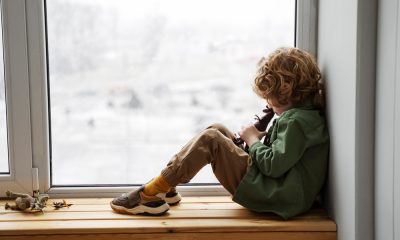Insights
Behind Advinia’s technological solutions for the care home sector

AgeTech World sat down with Dr Sanjeev Kanoria, owner of Advinia Healthcare, to discuss how technology could revolutionise the care home sector.
Advinia Healthcare is one of the biggest private care providers in the UK with 38 care homes around the country.
According to the 2019 ONS figures on internet users, there were four million people in the UK who have never used the internet of which 62 per cent were over the age of 75.
This is one of the reasons why healthcare providers and care homes are equipping technologies in their facilities. Under the TechForce19 challenge, 18 innovative digital solutions were announced with the aim of helping people particularly vulnerable or isolated people during the pandemic.
Advinia Healthcare conducted a trial that showed that artificial intelligence in care homes can reduce anxiety and loneliness in older people.
Dr Kanoria said: “Older people experience much more depression, suicidal thoughts and anxiety than younger people do because of loneliness.
“We started using artificial intelligence softwares to combat older peoples mental health and lonliness.”
Advinia Healthcare uses technology to manage all the key aspects of the business, which it’s even enabling the company to manage the recruitment crisis that the UK is facing.
The number of technological softwares used by the company goes back to five year age<span class=”Apple-converted-space”> when they created the first culturally intelligence software for care homes.
Culturally intelligence softwares are a globally recognised way of assessing and improving effectiveness for culturally diverse situations.
Advinia is about to commercialise this new product by the end of this year.
“People are very used to technology and even older people do not hesitate to use it,” said Dr Kanoria. “People are more experimental that they used to be and even people in care homes are willing to try new technologies to see whether it works for them or not.”
Technology in care homes is also being used as a tool in the post-Covid world. After Covid-19, Advinia has acquired a new business that provides video services.
“We are expanding remote access to include the patients’ own data and where remote care of the patients can be done,” said Dr Kanoria.
“We are buying more care homes and we are experimenting with more and more advanced technological softwares as we want to be able to remotely monitor our patients.
“We’re putting a lot of technology in our care homes. Plus, the rollout of our dementia robotics will significantly change the way the older care sector works.”
News
Childhood loneliness linked to increased risk of dementia, study finds

Childhood loneliness increases the risk of dementia in later life, according to new research.
Adults who recalled being lonely and without a close friend in childhood faced a 41 per cent higher risk of developing dementia, even if they were no longer lonely as adults.
People who frequently felt lonely without close friends during youth showed accelerated cognitive decline — a worsening of memory and thinking — and started middle age with lower scores on these skills.
Researchers from universities in China, Australia and the US, including Harvard and Boston universities, analysed data from 13,592 Chinese adults tracked from June 2011 to December 2018.
The critical factor was the subjective feeling of loneliness itself. Those who reported often feeling lonely as children had a 51 per cent higher dementia risk, even if some had close friends.
However, those who only lacked close friends but did not feel lonely showed no significant difference in risk.
Nearly half of roughly 1,400 adults in the study reported being lonely and without close friends during childhood.
The 4.2 per cent who experienced both faced the highest risk of cognitive decline.
The link to dementia remained strong even for people who were no longer lonely in adulthood, suggesting early-life isolation can have lasting effects on brain health.
During childhood, the brain develops rapidly and is vulnerable to harm. Loneliness acts as a chronic stressor, flooding the developing brain with harmful hormones that can damage memory centres, and it reduces stimulation from social play and peer interaction that helps build robust neural networks.
A separate 2024 study of more than 10,000 older adults found that specific childhood hardships — including poverty, disruptive home environments or parental addiction — were directly linked to poorer cognitive function later in life.
Youth loneliness appears to be rising, partly linked to widespread social media use.
Among girls, 64 per cent aged five to seven, 67 per cent aged eight to 10, and 73 per cent aged 11 to 13 reported feelings of loneliness last year. More than a quarter of boys aged 11 to 17 in the US report feeling lonely.
Children face growing social isolation, with one in four Americans now eating every meal alone — a rate that has surged by over 50 per cent since 2003. Sharing meals with friends and family helps build bonds and positive memories in youth.
Fewer children are playing outside or joining team sports.
A recent study reported that one in three children do not play outside on school days, and one in five do not do so even at weekends.
The 2024 research found a direct, dose-dependent relationship between childhood adversity and cognitive problems in adults — the greater the early trauma, the greater the later risk.
For each significant increase in early trauma, individuals faced an eight per cent higher risk of daily memory issues and scored lower on objective tests of mental speed and focus.
News
Don’t miss you essential monthly agetech update

Your essential monthly update on agetech’s progress
Welcome to your monthly snapshot of the facts, figures, opinions, trends and challenges shaping the development of agetech.
Our new monthly tracker report aims to provide an concise update for busy agetech professionals on the many factors influencing your work.
Here you will find a concise breakdown of deals, developments and opportunities from the last 30 days; and insight and opinion from leading thinkers in the field.
We hope you find something useful and/or inspiring below – and welcome any feedback about what else you’d like to see included.
Independence
Snoring, silence, and the menopause taboo: The hidden health crisis affecting millions

By Professor Ama Johal, clinical lead and dental sleep expert at Aerox Health
During menopause, it’s very common for women to notice significant changes to their sleep patterns and experience things like restless nights, loud snoring, or simply waking up feeling exhausted.
What most don’t realise, however, is that these symptoms can signal something far more serious – obstructive sleep apnoea (OSA), one of the most impactful and consequential sleep-related breathing disorders.
Women across the world are unknowingly fighting an uphill battle. Around 90 per cent of females with moderate to severe sleep apnoea remain undiagnosed.
This collective lack of awareness is due to a plethora of factors including archaic taboos around the subject and lack of education or omission of menopause in sexual education.
Ultimately, this combination leaves women underprepared and vulnerable to the biological, social and medical realities associated with the menopause.
Now more than ever, we must confront this silence head-on and recognise the hidden sleep crisis affecting so many women globally and the opportunity to address it.
The hidden sleep crisis
Snoring that develops or worsens during menopause can progress into OSA due to a decline in estrogen and progesterone which reduces muscle tone in the throat and in turn makes the obstruction or collapse of the airways more likely during sleep.
Yet this link between menopause and sleep disorders remains largely overlooked, leaving millions of women undiagnosed, untreated, and unaware that their sleep struggles are more than just “part of getting older”.
In my practice, I see the consequences of this misunderstanding far too often.
I hear from many female patients who have been suffering in silence, without the knowledge that they could seek help. In fact, I often encounter the common misconception that snoring is a man’s issue.
This preconceived notion perpetuates a persistent gender bias in sleep-related health research.
As ENT consultant and sleep surgeon at University College London hospitals, Ryan Chin Taw Cheong recently highlighted, the development of snoring is reason enough to consult your doctor. It’s time for this pervasive issue to emerge from the dark.
So why don’t women seek help?
When considering why many women do not seek help for their symptoms, there are two overarching reasons.
Firstly, the information and knowledge is not widely available for sufferers to realise that snoring can be a medical issue which can be assessed and subsequently readily treated.
Secondly, there is a potent stigma surrounding both the menopause and snoring which is an inhibiting factor amongst sufferers, discouraging open discussion.
Perhaps unsurprisingly, menopause is not included in traditional sex education in schools. Being unaware of what is ‘normal’ and what could require medical attention is widespread amongst my patients with sleep disorders, yet this information is not freely disseminated outside of clinics.
Unfortunately, cognitive fog and irritability – symptoms of snoring and obstructive sleep apnoea – are too often written off as stress, anxiety or ‘just the menopause’.
Avoiding sharing symptoms with medical providers, combined with online misinformation, often results in individuals suffering in silence or worse, turning to unregulated miracle menopause cures that exacerbate the risks of undiagnosed OSA.
These so-called ‘cures’ reinforce the harmful notion that the menopause is a defect which needs to be fixed rather than a natural life stage.
The health costs of ignoring snoring
A breadth of research links untreated OSA to cardiovascular disease, hypertension and cognitive decline.
However, aside from the medical risks, snoring and sleep apnoea can have profound social and emotional consequences.
For women, the shame in snoring, a symptom often mischaracterised as a ‘male issue’, can significantly affect self esteem and mental health.
Partners may also suffer if the snoring is disruptive to their sleep, in some instances causing rifts in relationships and a phenomena known as ‘sleep divorces’ (sleeping in separate beds or rooms).
In fact, according to a recent study commissioned by 32Co, 47% of recently divorced Brits cite interrupted sleep linked to snoring or sleep disorders as contributing to their relationship breakdowns, with 85 per cent believing ‘sleep divorces’ contributed to ultimate separation.
Sleep specialists seek to manage and monitor the symptoms of sleep disorders and OSA to minimise disruption to an individual’s personal and public life.
Screening menopausal women for OSA is a preventative measure which leads to informed patients. It is not simply about getting better sleep but about the long-term health outcomes.
Breaking the silence: what needs to change
Drawing on the stories of those I meet in my clinic, I would like to outline five steps that we can take to address this silent epidemic.
First, the menopause and associated symptoms should be included in a comprehensive sex and health education.
This could be provided both in schools’ curricula and made readily available at health services catering to adults.
Second, throughout the course of history women’s issues have been chronically underserved.
More resources can be funnelled into conducting research to help us better understand the impact of the menopause on women’s physical and mental health.
Future research would also help to neutralise the gender bias of previous studies.
Third, launching public health campaigns and workplace initiatives to encourage employers to recognise sleep disorders as a significant element of menopause will help build awareness and reduce the impact of stigmas.
Fourth, myth-busting, shattering taboos, and normalising discussion about the menopause will be key.
We must view snoring as a gender neutral issue rather than a male stereotype and denounce harmful rhetoric and jokes that perpetuate stigma.
Fifth, we must better equip more localised healthcare providers up and down the country to both diagnose and treat OSA effectively.
Sleep disorders are not niche issues but a major public health concern with potentially severe consequences.
Quality of life amongst my patients is inextricably linked with sleep quality.
Recognising the relationship between snoring and OSA and the menopause is not simply about pathologising a natural stage of life, but providing women with the information, respect and medical care they deserve.
Only through more transparency and collaboration amongst researchers, educators and clinicians can we hope to close the gender gap in sleep medicine and bring this hidden crisis to light.

 News2 months ago
News2 months agoWeight loss jabs should be first-line obesity treatment in most cases, new guidance states

 News3 weeks ago
News3 weeks agoCzech firm approved for hydrogen Alzheimer’s trial

 News6 days ago
News6 days agoGladys raises £1.5m for AI home care

 News1 month ago
News1 month agoNew drug enhances GLP-1 weight loss without extra added effects, trial finds

 Insights3 weeks ago
Insights3 weeks agoCreativity helps keep the brain young, study finds

 News2 months ago
News2 months agoDrinking even small amounts of alcohol may increase dementia risk, study finds

 News4 weeks ago
News4 weeks agoFamily backs calls for dementia-friendly hospital

 News2 weeks ago
News2 weeks agoLow-dose aspirin beneficial for type 2 diabetes, study finds
































